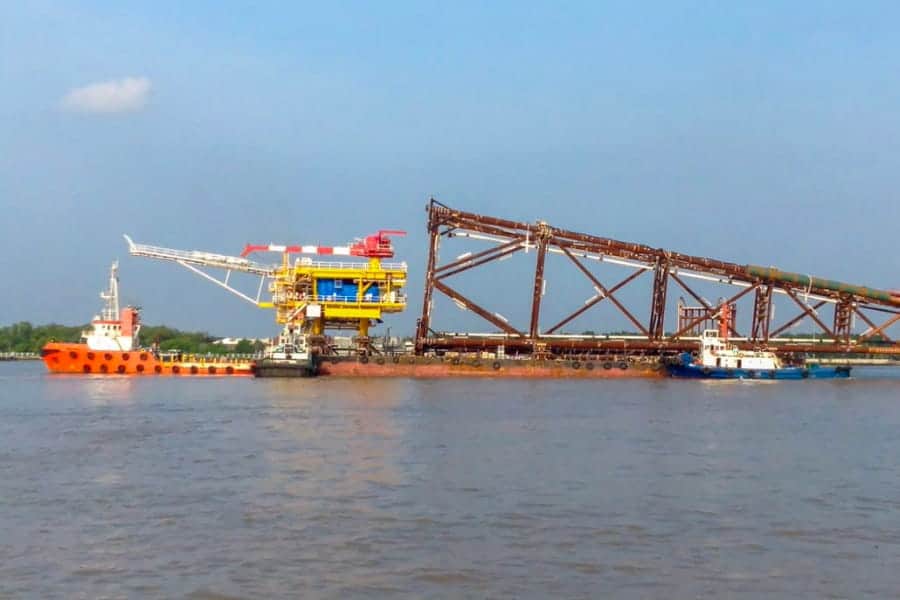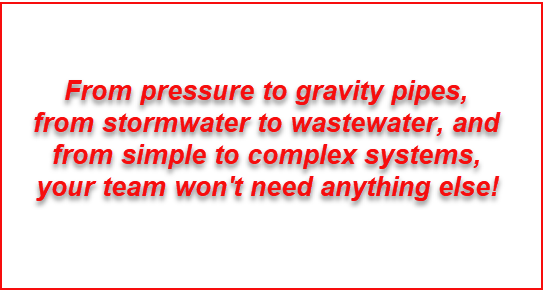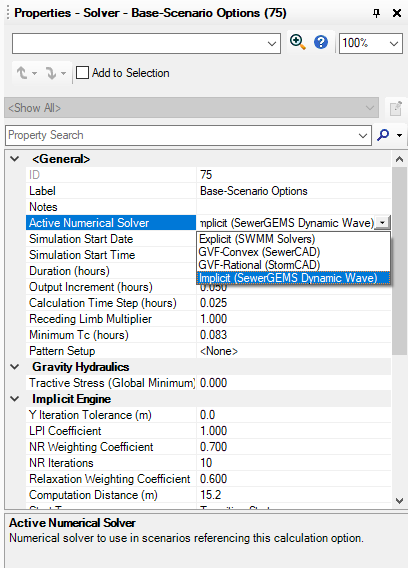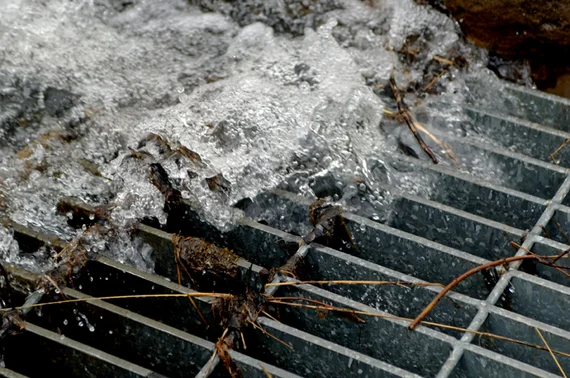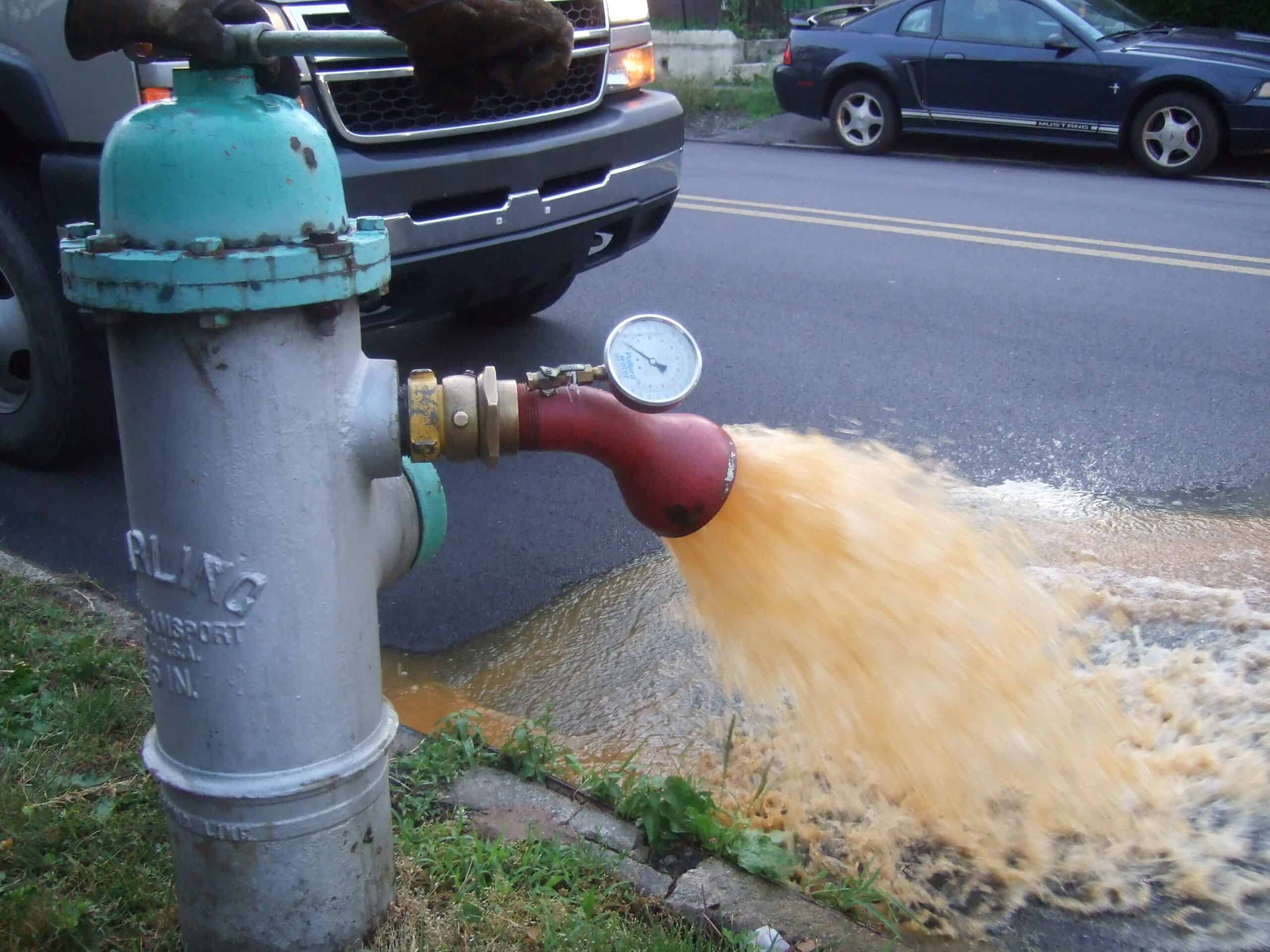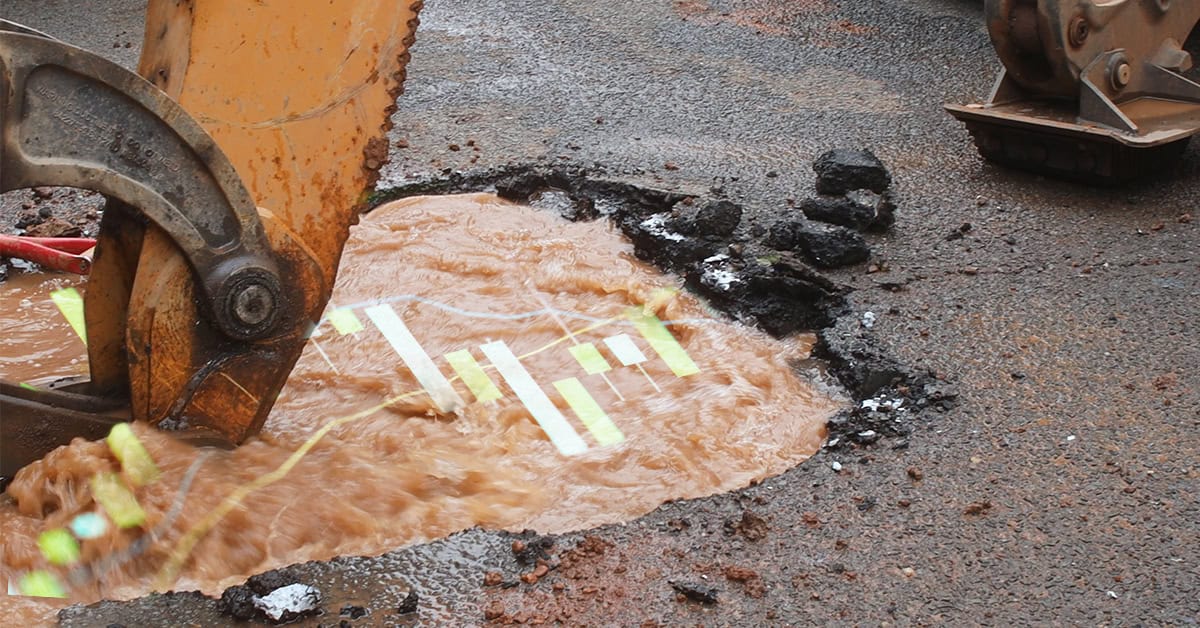OpenFlows SewerGEMS is a unique, versatile, and powerful solution for sewage, drainage, and combined networks. In this first part, we will give you some tips on finding the best solvers for stormwater networks, and in the second part, we will help you with wastewater and combined systems.
This robust solution provides engineers and sanitary network designers to reduce time and error in their projects. OpenFlows SewerGEMS combines constraint-based design routines, advanced scenario management with an easy-to-use user graphic interface, as well as easy-to-build and easy-to-maintain tools. It allows you to keep your hydraulic model accurate and up to date, saving time and effort in your critical decision-making processes.
This complete solution integrates seamlessly with the most popular CAD and GIS platforms (MicroStation, ArcGIS Pro, ArcMap, and AutoCAD). You get to choose whether you want to run OpenFlows SewerGEMS as a standalone platform or run it within the other platforms. Running it as a standalone platform eliminates the need for an additional subscription to another software. Suppose you choose to integrate OpenFlows SewerGEMS into one of the compatible platforms. In that case, you can improve the design, management, publishing, and sharing of 2D and 3D drawings, BIM data, geographic maps, and models.
Offers a 4-in-1 Solution for Every Type of Hydrodynamic Sanitary Network
Calculating the hydraulics of wastewater and stormwater network collection systems can be very difficult without the right tools. These systems have constantly changing conditions–from partially full pipes to complex control structures used for the pumping system.
For this reason, Bentley Systems, Incorporated four solvers into OpenFlows SewerGEMS. These different calculation methods enable you to adapt to all sorts of sanitary networks and hydraulic behaviors without switching between additional software or converting files. This is a huge advantage! It empowers our users to choose the best solver for each scenario and situation they face!
OpenFlows SewerGEMS offers the following solvers:
- GVF-Rational
- GVF-Convex
- Implicit Dynamic
- Explicit Dynamic (SWMM)
OpenFlows SewerGEMS differentiates itself in the market as the only solution that will carry engineers through all design and analysis stages – from conventional capacity and constraint-based design of pipe networks into complex hydraulics of storm, sanitary models, and combined-sewer systems. It is important to note that if you have any legacy StormCAD, SewerCAD, or CivilStorm files, they can all easily be loaded into OpenFlows SewerGEMS.
Which Solver in OpenFlows SewerGEMS is the Best?
All solvers have their strengths and weaknesses, so there is no such a thing as a “best solver!” Your role as an engineer is to select the solver that will best reflect the hydrodynamic behavior of your network under the conditions of interest.
Additionally, there is not a single “correct” way to solve the complex hydrodynamic conditions you may find in a system made of gravity and pressure pipes. Each problem has its own characteristics and challenges that can make one solver (sometimes called an “engine”) more advantageous and appropriate than the others.
Choosing an OpenFlows SewerGEMS Solver for my Drainage Network
Before deciding which solver best fits your problem, you first need to consider how the flow is expected to behave in your network by asking yourself the following questions:
- Is the flow steady or unsteady?
- Do you have storage volume with ponds?
- Are there pressure loops?
- Do you have pressure pipes, or is your system only gravity pipes?
To select the best solver, clarify if extended simulations are needed to understand the load pattern effects or perform analysis and design for peak flows.
Even though it is possible to compute the catchment and rainfall hydrology separately and insert the results as inflow hydrographs in the GVF-Convex solver, this generally is not recommended as this solver is intended to design sewer systems and has known limitations to simulate overflow.
The GVF-rational solver should be selected if your project involves stormwater runoff from small areas (up to 200 acres or 80 hectares) where the rational method is valid.
If your assessment drainage network has a drainage area larger than 200 acres or has overflows, loops, flow splits, and relevant storage of water in ponds, the dynamic solvers (Implicit and Explicit) should be considered.
Therefore, for drainage networks, you should consider the following solvers:
The GVF Rational Solver for Hydraulic Properties
The GVF – Rational uses rational method flows (plus other additional flows). This solver can analyze or design a system under peak flow conditions based on peak rainfall intensity. After calculating the hydraulic routing, it will calculate the hydraulic properties based on the peak flows. It gets values for CA downstream while decreasing peak factors due to a longer time of concentration moving downstream. Once flows are determined, hydraulic grade (including depth and velocity) is determined using gradually varied flow (GVF) methods for both gravity and pressure pipes.
Although there is a way to use rational method C values with dynamic flows employing a “modified rational method,” it will only solve for peak flows. If you need to consider rainfall hyetographs (rain vs. time) and develop hydrographs (flow vs. time) for each pipe and route the flows dynamically, you should consider the dynamic solvers (Implicit or Explicit).
Dynamic Solver with Saint-Venant Equations
If you have complex and problematic systems with cross-connections, loops, or dynamic surcharging and ponding, where catchment rainfall-runoff calculations are required, OpenFlows SewerGEMS offers you the capabilities of EPA SWMM along with Bentley’s implicit solver.
These Dynamic Solvers work best in primarily gravity flow systems, with pumping limited to simple force mains without complex pressure hydraulics. There are some differences between the dynamic solver solutions.
Inflow hydrographs are also handled differently by the two engines. The implicit solver interpolates flows between the final flow in the hydrograph and the end time. While the explicit solver assumes that all flows after the final inflow point are zero.
Also, for the explicit solver, there is an initial elevation attribute for manholes. This allows the calculation to simulate a filling process if the initial elevation is lower than the downstream start elevation. However, in the implicit solver, the manhole initial elevation is not considered, so the initial manhole elevation is assumed to be the same as the downstream start elevation.
With all of this in mind, it is not a matter of right and wrong or better or worse. OpenFlows SewerGEMS gives you the alternative to choose what best fits your project!
Implicit Solver for Hydrodynamics
This solver uses a four-point implicit finite difference solver to find the numerical solutions for the hydrodynamic Saint-Venant equations. This method was developed by Bentley and is based on the US National Weather Service FLDWAV model. It accounts for conditions in collection systems such as drop manholes and transition between gravity and pressure flow.
The implicit solver simultaneously solves for both flow and hydraulic grade and uses the same equations for gravity and pressure portions of the system. It only solves dynamic flows (no steady-state). The implicit solver tends to be more stable with pumping situations and performs better than the explicit with short pipes and loops in the network.
Explicit Stormwater Management Model (SWMM) Solver
As the name states, it solves the full Saint-Venant equations using an explicit numerical method based on the EPA Stormwater Management Model version 5 (SWMM). Besides the St. Venant Dynamic Wave and Diffusive Wave (ignoring the Dynamic Wave inertial term) solutions, it can also route flows using further simplification such as kinematic wave solution and a uniform flow solution, which cannot account for backwater effects. The Explicit dynamic solver simultaneously solves for both flow and hydraulic grade and uses the same equations for gravity and pressure portions of the system.
The explicit solver can be applied to storm systems without a great deal of force mains or pressure sewers. It tends to be more stable with fast-changing areas such as ponds or control structures where the flow or elevation changes quickly over multiple time steps. The explicit solver can also handle logic control for gravity structures.
Supports Optimal Design and Cost Efficiencies
Besides the wastewater and combined sanitary studies, OpenFlows SewerGEMS will help you save time, effort, and energy in designing and operating stormwater drainage systems. From systems for small areas where rational model-based peak flow analysis is adequate, using the GVF Rational solver to more complex systems where you must consider routing, storage, extended storms, and control overflows, with the power of the dynamic solvers: either the Explicit (SWMM) or Implicit (Bentley).
OpenFlows SewerGEMS will support you to find the optimal design, investigating Low Impact Development (LID) best practices and Sustainable Drainage Systems (SuDS) by reducing the time, effort, and cost and at the same time improving the quality of your deliverables.
Contact us if you are interested in culvert or ponding systems design or are only interested in drainage design. Our team of experts will support you to find the best solution that will meet your expectations and challenges!
Find the Best Solver For Your Drainage Network.
Contact our experts today.
North America Contact – Diego Rodriguez, Product Sales Engineer, [email protected], +16104582790
Latin America and Caribbean Contact – Julio Issao Kuwajima, Product Sales Engineer, [email protected] , +551128232656
